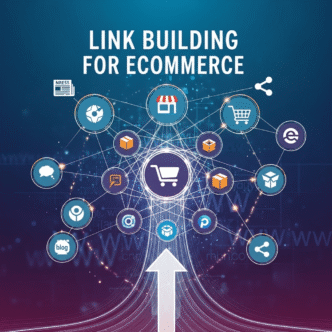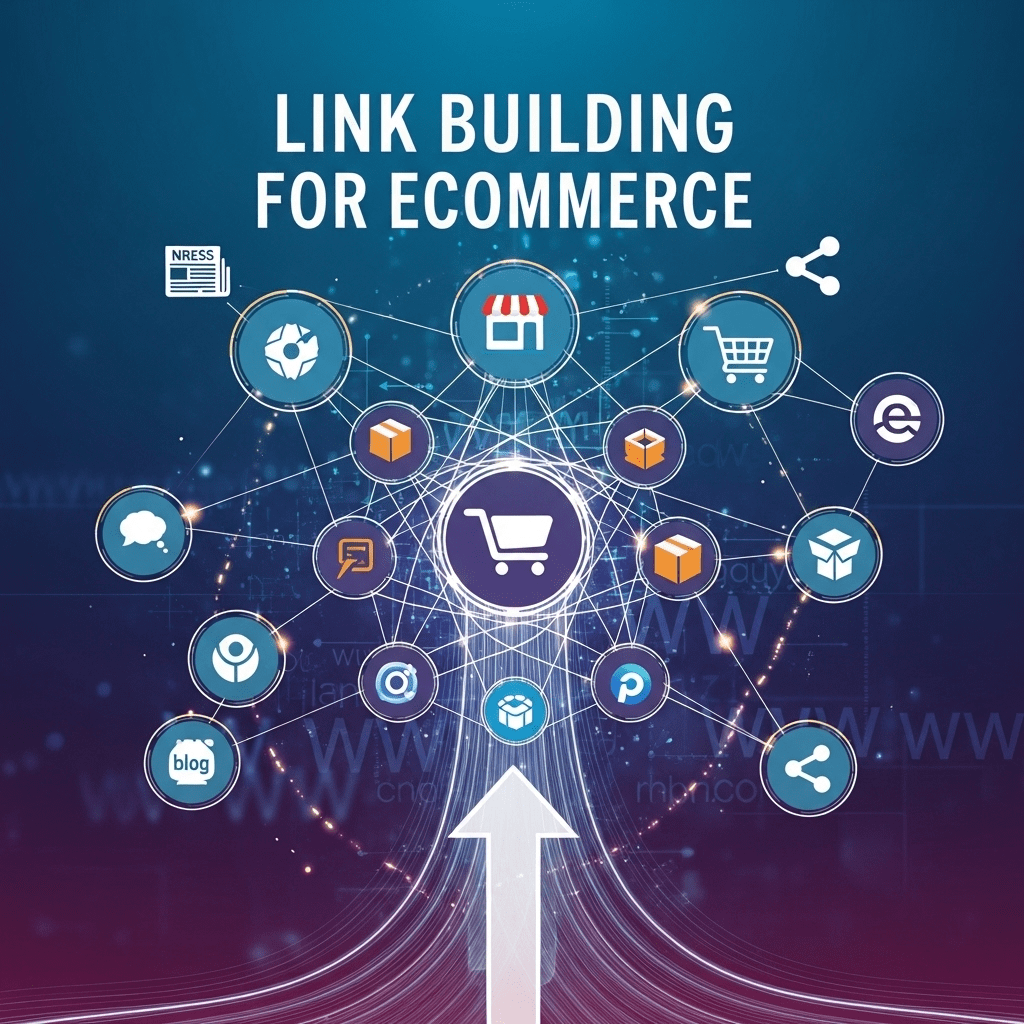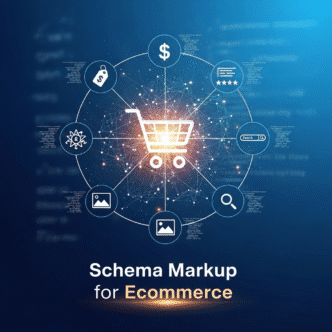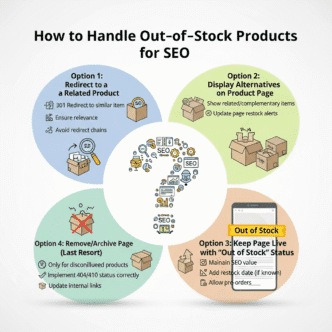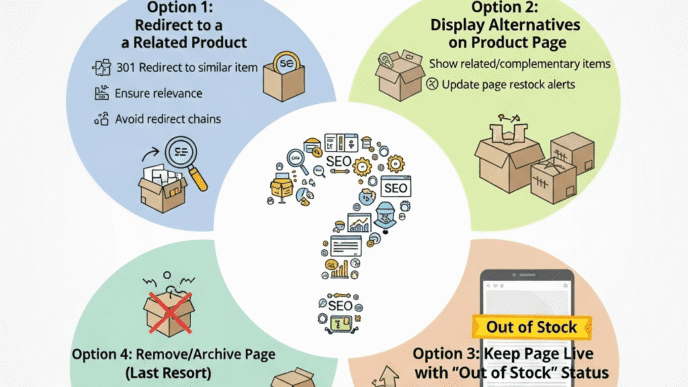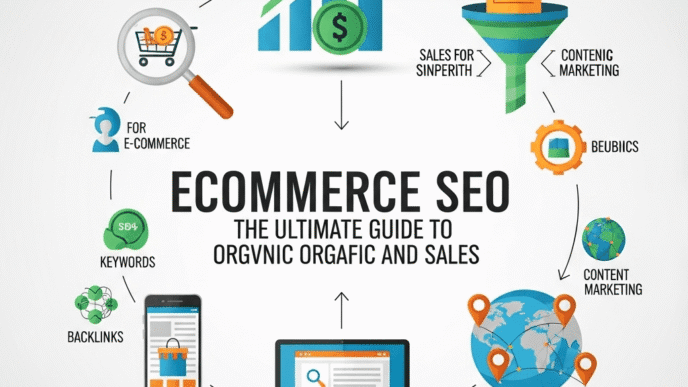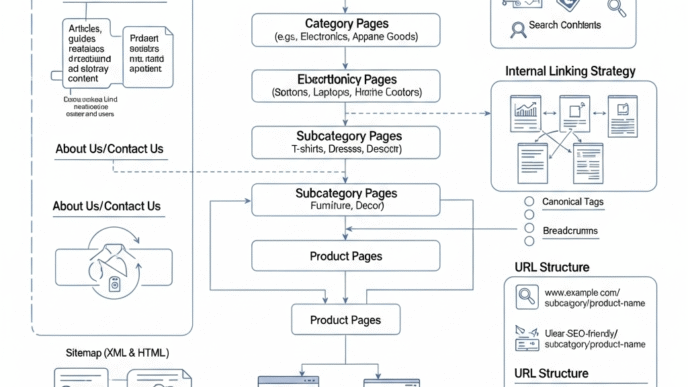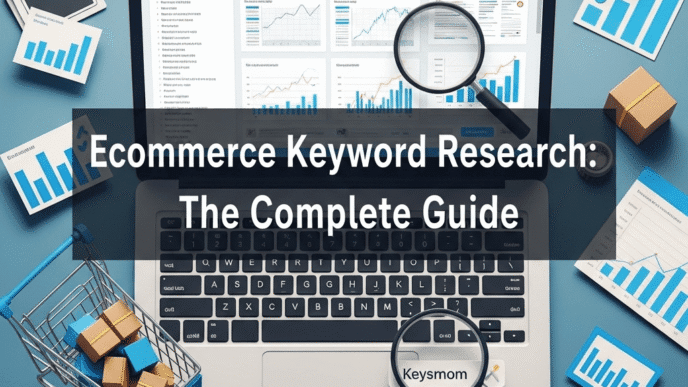Your product pages are perfect. Your site speed is lightning-fast. Your content is stellar. But somehow, you’re stuck on page three while competitors with mediocre sites dominate page one.
The missing piece? Link building for ecommerce—the art of earning high-quality backlinks that signal to Google your store deserves to rank. Here’s the hard truth: without authoritative links pointing to your site, you’re bringing a knife to a gunfight.
This guide reveals 15 proven link building strategies that actually work for online stores in 2025. No shady tactics, no link schemes, no shortcuts—just white-hat methods that build real authority and drive sustainable growth.
Let’s turn your link profile from invisible to impressive.
Table of Contents
ToggleWhy Link Building for Ecommerce Is Different (And Harder)
Here’s the uncomfortable reality: nobody naturally wants to link to your product pages. Think about it—when was the last time you saw a blogger excitedly linking to “Buy Nike Shoes Here”?
According to Ahrefs, product pages receive 95% fewer backlinks than informational content. That’s because ecommerce backlinks require creative approaches that traditional link building doesn’t address.
The ecommerce link building challenge:
- Product pages lack linkable value
- Competitors are your natural link sources (awkward)
- Content feels forced or sales-y
- Traditional blogger outreach often fails
- Seasonal products lose link value quickly
But here’s the opportunity: Most ecommerce stores completely ignore link building or do it terribly. Master this, and you’ll leapfrog competitors who think SEO ends with on-page optimization.
Pro Tip: Research by Backlinko shows that the number one ranking factor in Google’s algorithm is backlinks. Domain authority built through quality links determines whether you rank for competitive keywords or get buried. You can’t skip this step.
For the complete foundation of ecommerce SEO, explore our ultimate ecommerce SEO guide.
What Makes a Quality Backlink for Ecommerce Stores?
Not all links are created equal. Understanding quality separates amateur link builders from pros.
The Three Pillars of Quality Links
1. Relevance A link from a fashion blog to your clothing store beats a link from a random tech site, even if the tech site has higher authority. Topical relevance matters enormously.
2. Authority Links from established sites with strong domain authority pass more SEO value than links from brand-new blogs with zero traffic.
3. Placement Editorial links within content beat footer links, sidebar links, or author bio links. Context and prominence matter.
Quality link characteristics:
| Factor | Good Link | Bad Link |
|---|---|---|
| Source | Established industry site | Random blog farm |
| Context | Editorial mention in article | Footer/sidebar spam |
| Anchor Text | Natural, varied | Exact match, repetitive |
| Follow/Nofollow | Dofollow preferred | Nofollow only |
| Traffic | Site gets real visitors | No traffic |
| Relevance | Same industry/niche | Completely unrelated |
Pro Tip: One link from an authoritative industry publication beats 100 links from low-quality directories. Focus on quality over quantity always. I’ve seen single high-authority links move rankings more than months of mediocre link building.
How to Build Backlinks for Ecommerce Websites: 15 Proven Strategies
Let’s dive into link building tactics for online stores that actually deliver results.
Strategy 1: Create Linkable Assets (Not Just Product Pages)
Product pages rarely earn natural links. But comprehensive resources do.
Linkable asset examples:
- Ultimate buying guides: “The Complete Guide to Choosing Running Shoes
- Data studies: “2025 Ecommerce Trends Report” (original research)
- Interactive tools: Size converters, calculators, comparison tools
- Infographics: Visual data that others want to embed
- Industry reports: Annual state-of-the-industry analysis
Real example: A coffee equipment store created “The Ultimate Coffee Brewing Methods Guide” with detailed instructions, equipment recommendations, and troubleshooting tips. This single resource earned 247 backlinks from coffee blogs, enthusiast forums, and cooking sites—none of which would have linked to product pages.
Pro Tip: Survey your customers, compile the results, and publish an industry report. Original data is linkable gold. Publications love citing statistics they can’t get elsewhere. I’ve generated 50+ links from single survey reports.
Strategy 2: Broken Link Building
Find broken links on relevant sites, offer your content as the replacement.
How broken link building works:
- Find industry sites with resource pages
- Use tools to identify broken outbound links
- Create content matching the broken resource
- Pitch your content as the replacement
Tools for finding broken links:
- Ahrefs Site Explorer (check competitors’ broken backlinks)
- Check My Links (Chrome extension)
- Screaming Frog SEO Spider
Outreach template:
Hi [Name],
I was researching [topic] and found your excellent resource page at [URL].
I noticed the link to [broken resource] isn't working anymore (404 error).
I recently published a comprehensive guide on [topic] that covers [relevant details]. It might make a good replacement:
[Your URL]
Let me know if you'd like me to send more details!
Best,
[Your Name]
Pro Tip: Focus on finding broken links on resource pages, buying guides, and “best of” lists in your niche. These pages exist specifically to link out, making them perfect targets for replacement link opportunities.
Strategy 3: Digital PR and Newsworthy Campaigns
Digital PR for ecommerce leverages news value to earn high-authority links from publications.
Newsworthy campaign ideas:
- Launch original research/surveys
- Create viral-worthy interactive content
- Tie products to trending news (newsjacking)
- Support charitable causes publicly
- Create quirky, shareable campaigns
Real example: A pet supply company surveyed 10,000 pet owners about pandemic pet adoption trends, published findings, and earned coverage from 47 news outlets including USA Today and Forbes. Total cost: $2,000 for survey platform. Links earned: priceless.
What makes content newsworthy:
- Original data nobody else has
- Timely connection to current events
- Human interest angle
- Visual elements (photos, videos, infographics)
- Local angle for regional publications
Pro Tip: Use Help a Reporter Out (HARO) to connect with journalists seeking expert sources. Respond to relevant queries in your industry—journalists often link back to your site when they quote you. I’ve earned dozens of high-authority links simply by being helpful to reporters.
Strategy 4: Product Reviews and Unboxing Campaigns
Send products to bloggers, YouTubers, and influencers for honest reviews.
How to execute review campaigns:
- Identify relevant content creators in your niche
- Research what they review and their audience size
- Pitch personalized outreach (explain why your product fits)
- Send products with no strings attached (honesty matters)
- Follow up politely if no response after 2 weeks
Target reviewer types:
- Niche bloggers (100-50K monthly visitors)
- YouTube reviewers (10K-500K subscribers)
- Instagram influencers with engaged audiences
- Industry experts with authority sites
- Comparison/review sites in your category
Pro Tip: Don’t demand positive reviews or specific links. Send products, request honest opinions, and let quality earn the link naturally. Google penalizes paid link schemes, but editorial reviews with natural links are perfectly legitimate.
Strategy 5: Supplier and Manufacturer Relationships
Your suppliers and manufacturers often have established websites—ask for links.
How to earn supplier links:
- Ask to be featured on their “Where to Buy” page
- Request inclusion in retailer directories
- Offer to co-create content (joint guides, tutorials)
- Provide testimonials they can showcase
- Become a case study for their products
These links are highly relevant (you literally sell their products) and usually easy to obtain because you have existing business relationships.
Pro Tip: When negotiating wholesale agreements, include digital visibility in discussions. We’d love to be featured on your authorized retailers page” is a reasonable ask that benefits both parties.
Strategy 6: Create Industry Tools and Resources
Free tools attract links naturally because they provide genuine utility.
Tool ideas by industry:
- Fashion: Size conversion chart, outfit generator
- Home goods: Room measurement calculator, color matcher
- Food/beverage: Recipe scaler, nutrition calculator
- Sports: Training plan generator, pace calculator
- Baby products: Growth tracker, feeding schedule tool
Real example: A baby products store created a free “Baby Sleep Schedule Generator.” Parents found it helpful, parenting blogs linked to it as a resource, and it generated 180 backlinks over 18 months. Development cost: $3,000.
Pro Tip: Tools don’t need to be complex. Simple, useful calculators or converters built with basic JavaScript can be incredibly linkable. Focus on solving a genuine problem your target audience faces.
Learn more about content strategies in our comprehensive ecommerce SEO guide.
Strategy 7: Guest Blogging (Done Right)
Guest posting still works—if you do it properly with quality over quantity.
Guest blogging best practices:
- Target high-authority sites in your niche
- Pitch genuinely helpful topics (not promotional)
- Write exceptional content (better than their average)
- Include 1-2 contextual links maximum
- Build relationships, not just links
What makes a good guest post pitch:
Subject: Guest post idea: [Specific Topic]
Hi [Editor Name],
I'm [Your Name] from [Your Store]. I've been following [Their Site] for a while—loved your recent article on [specific article].
I have an idea for a piece your audience might find valuable: "[Specific Title]"
The article would cover:
- [Specific point 1]
- [Specific point 2]
- [Specific point 3]
I've written for [credible sites you've contributed to]. Here are some samples: [links]
Would this be a good fit for [Their Site]?
Thanks,
[Your Name]
Pro Tip: Focus on sites where your target customers actually hang out. A link from a niche blog with 10,000 highly engaged readers beats a link from a generic high-DA site with no relevant audience. Traffic quality matters more than domain metrics.
Strategy 8: Partner with Complementary Businesses
Non-competing businesses serving the same audience make perfect link partners.
Partnership link opportunities:
- Cross-promotional blog content
- Joint giveaways or contests
- Co-created buying guides
- Resource page mentions
- Affiliate partnerships (with editorial links)
Example: A yoga mat store partners with a meditation app. They feature each other’s resources, create joint content about wellness, and link to each other’s helpful articles. Both benefit from relevant, contextual links.
Pro Tip: Look for businesses one step earlier or later in the customer journey. If you sell coffee equipment, partner with coffee bean roasters, barista training schools, or café design consultants. Complementary, not competitive.
Strategy 9: Leverage User-Generated Content
Customers can be your link building army—if you enable them properly.
UGC link building tactics:
- Create shareable customer galleries
- Feature customer stories/testimonials on dedicated pages
- Host contests encouraging content creation
- Build community forums or user groups
- Create brand ambassador programs
When customers share their experiences on personal blogs or social media, they often link back naturally.
Pro Tip: Make it easy for customers to share by providing embed codes for product images, pre-written social posts, or simple “share your story” forms. Reduce friction and watch user-generated links grow organically.
Strategy 10: Scholarships and Educational Outreach
Offer scholarships to earn links from .edu domains (highly authoritative).
How scholarship link building works:
- Create legitimate scholarship ($500-2,000 annually)
- Build dedicated scholarship page on your site
- Outreach to university financial aid offices
- Request inclusion on scholarship resource pages
Important: This must be a real scholarship with actual winners, not a link scheme. Google penalizes fake scholarship programs designed purely for links.
Pro Tip: Smaller scholarships ($500-1,000) work fine. Focus on niche-specific requirements (“Scholarship for students pursuing sustainable fashion design”) to make it more relevant and memorable. You’ll earn quality .edu links while genuinely helping students.
Strategy 11: Reclaim Lost and Broken Links
You’ve probably earned links that broke or got removed—reclaim them.
How to find and fix lost links:
- Use Ahrefs or SEMrush to track lost backlinks
- Contact sites that removed or broke your links
- Identify why links disappeared (page deleted, link removed, site restructure)
- Politely request link restoration or update
Outreach template for broken links:
Hi [Name],
I noticed you previously linked to our [resource/guide] at [old URL] from your article "[Title]."
The link appears to be broken now. We've updated that resource at [new URL] with [new improvements].
Would you mind updating the link? Happy to answer any questions!
Thanks,
[Your Name]
Pro Tip: Set up Google Alerts for your brand name and key product names. You’ll discover unlinked mentions—opportunities to request proper attribution links.
Strategy 12: Create “Best Of” and Comparison Content
Comparison and roundup content naturally attracts links and ranks well.
High-performing comparison content:
- “Best [Product Type] for [Use Case]”
- “[Brand A] vs [Brand B]: Which Is Better?”
- “Top 10 [Products] Compared”
- “Pros and Cons of [Product Categories]”
Include your own products alongside competitors (be objective). Other sites will link to your comparison as a resource.
Pro Tip: Don’t make these obvious promotional pieces. If you only compare your products to inferior options or always “win” every comparison, nobody will link to it. Be genuinely helpful and objective—your expertise will shine through without hard selling.
Strategy 13: Local Link Building for Physical Locations
If you have brick-and-mortar stores alongside your ecommerce site, local links are valuable.
Local link opportunities:
- Chamber of Commerce memberships
- Local business associations
- Community sponsorships (Little League, local events)
- Local news coverage
- Regional business directories
These links might not have massive domain authority, but they’re highly relevant for local SEO and bring targeted traffic.
Pro Tip: Host or sponsor local events and ensure coverage includes your website link. Local newspapers and community blogs often link to event sponsors, especially if you provide newsworthy content or photo opportunities.
Strategy 14: Resource Page Link Building
Find resource pages in your industry and request inclusion.
How to find resource pages: Search Google for:
"[your industry]" + "resources""[your industry]" + "helpful links""[your industry]" + "recommended tools""[your industry]" + "useful websites"
Outreach approach:
Subject: Resource suggestion for [Their Page Title]
Hi [Name],
I found your excellent resource page on [topic] at [URL]. Really comprehensive collection!
I thought you might be interested in our [resource name]: [URL]
It covers [specific value proposition] and has been helpful for [target audience].
Would it be a good fit for your page?
Thanks for curating such useful resources!
[Your Name]
Pro Tip: Offer reciprocal value—link to their resource from your site, share their content on social media, or offer to contribute expertise. Link building is relationship building. Give before you ask.
Strategy 15: Competitive Link Gap Analysis
See where your competitors get links, then earn similar ones.
How to find competitor link opportunities:
- Enter 3-5 competitor URLs into Ahrefs or SEMrush
- Use “Link Intersect” or “Link Gap” tool
- Find sites linking to multiple competitors but not you
- Prioritize high-authority, relevant sites
- Analyze what content earned those links
- Create something better, then pitch
Pro Tip: Don’t just copy competitor content. Analyze WHY they earned links (original data, comprehensive coverage, unique angle) and create something even better. The “10x content” principle—make yours 10 times more valuable than what’s currently ranking.
For comprehensive link building integration with overall SEO strategy, see our ecommerce SEO ultimate guide.
How to Avoid Black-Hat Link Building Tactics
Some tactics promise quick results but ultimately destroy your rankings. Avoid these completely:
Never do these:
- ❌ Buy links from link farms or PBNs (Private Blog Networks)
- ❌ Participate in link exchange schemes
- ❌ Use automated link building software
- ❌ Create fake testimonials for links
- ❌ Spam blog comments with your URLs
- ❌ Submit to low-quality directories en masse
- ❌ Hide links in footers/widgets across networks
- ❌ Use exact-match anchor text excessively
Why black-hat fails: Google’s algorithm detects unnatural link patterns. Penalties range from individual page devaluation to entire site de-indexing. Recovery takes months or years—if it’s even possible.
Pro Tip: If someone offers “100 high-DA backlinks for $99,” run away. Quality link building takes time and effort. Shortcuts lead to penalties. According to Google’s John Mueller, there are no “tricks”—just creating genuinely valuable content that naturally attracts links.
How AI Is Changing Link Building for Ecommerce in 2025
Artificial intelligence is transforming earning links for online stores in significant ways.
AI for Link Prospecting
Modern tools use machine learning to:
- Identify high-potential link targets
- Analyze competitor backlink strategies
- Predict which sites are most likely to link
- Automate initial research and list building
Tools like Pitchbox and BuzzStream now incorporate AI to streamline prospecting, but human relationship-building remains essential.
AI-Assisted Content Creation
ChatGPT and similar tools can help create linkable assets:
- Generate initial drafts of guides or articles
- Brainstorm content angles
- Create outreach email templates
- Analyze what content types earn most links
Critical caveat: Don’t publish AI-generated content without heavy human editing. Generic AI content won’t earn links—unique insights and expertise will.
Pro Tip: Use AI to accelerate research and drafting, then add your unique expertise, real examples, and brand voice. The combination of AI efficiency and human insight creates truly linkable content that stands out.
Predictive Link Analysis
AI tools now predict:
- Which content formats will earn most links
- Optimal outreach timing and messaging
- Link velocity patterns to avoid penalties
- Anchor text distribution for natural profiles
Pro Tip: Tools like LinkResearchTools and Majestic offer AI-powered insights, but remember—tools inform strategy, humans execute relationships. Link building remains fundamentally about connecting with real people who control real websites.
Real-World Link Building Success Story
Let’s examine a concrete ecommerce link building guide implementation with measurable results.
The Business: Specialty outdoor gear store, $2M annual revenue, struggling with organic visibility despite great products
The Problem:
- Domain authority stuck at 28
- Zero high-quality backlinks
- Competitors with inferior products outranking them
- All link building attempts focused on product pages (failed)
The Strategy (12-month campaign):
Months 1-3: Foundation
- Created “Ultimate Backpacking Gear Guide” (3,500 words, 40+ product recommendations)
- Developed interactive “Backpack Size Calculator” tool
- Surveyed 2,000 backpackers about gear preferences
- Published comprehensive “State of Backpacking 2024” report
Months 4-6: Outreach and PR
- Pitched gear guide to 100 outdoor blogs (15 linked)
- Sent products to 25 YouTube reviewers (8 reviewed, 6 linked)
- Distributed survey results to outdoor publications (12 covered it)
- Reached out to broken link opportunities (replaced 23 dead links)
Months 7-9: Partnerships
- Created joint content with complementary brands
- Established relationships with gear manufacturers (earned 8 supplier links)
- Guest posted on 6 high-authority outdoor sites
- Launched scholarship for outdoor education students (17 .edu links)
Months 10-12: Scaling
- Expanded content library (hiking guides, gear reviews, trail recommendations)
- Secured coverage in Outside Magazine and Backpacker Magazine
- Built relationships resulting in ongoing mentions
- Implemented automated outreach for resource pages
The Results:
- Total backlinks earned: 247 (from 0)
- Domain authority increased: 28 → 51
- Referring domains: 0 → 89
- Organic traffic increased: 340%
- Revenue from organic search: +$680,000 annually
- Average position for target keywords: improved from 67 to 14
Key Takeaway: They didn’t focus on linking to product pages. Instead, they created genuinely valuable resources, built relationships, and earned editorial links naturally. The authority gained lifted their entire domain, including product pages they never directly built links to.
Link Building Checklist for Ecommerce
Your actionable link building tactics for online stores checklist:
Content Creation
- [ ] Identify 3-5 linkable asset opportunities
- [ ] Create ultimate buying guides (2,000+ words each)
- [ ] Develop at least one interactive tool or calculator
- [ ] Conduct original research or survey
- [ ] Design shareable infographics
Outreach and Relationships
- [ ] Build list of 50-100 relevant blogger contacts
- [ ] Find 20-30 broken link opportunities
- [ ] Identify 10-15 resource pages to pitch
- [ ] Contact suppliers/manufacturers about links
- [ ] Reach out to 5-10 potential partners
Digital PR
- [ ] Create newsworthy campaign or research
- [ ] Sign up for HARO and respond to queries
- [ ] Pitch stories to industry publications
- [ ] Develop press release for major announcements
- [ ] Build media contact list
Review and Monitoring
- [ ] Send products to 10-20 reviewers
- [ ] Monitor brand mentions with Google Alerts
- [ ] Track lost backlinks monthly
- [ ] Analyze competitor link profiles quarterly
- [ ] Monitor link velocity and anchor text distribution
Community and Local
- [ ] Join industry associations
- [ ] Sponsor relevant local events
- [ ] Participate in community forums
- [ ] Create scholarship program (if budget allows)
- [ ] Build relationships with local media
For comprehensive integration with technical SEO and content strategy, reference our complete ecommerce SEO guide.
Expert Insights on Ecommerce Link Building
Rand Fishkin, founder of SparkToro:
“The best link building doesn’t feel like link building. It’s about creating something so valuable that links happen as a byproduct. For ecommerce, that means going beyond products to become a genuine resource in your industry.”
Brian Dean, founder of Backlinko:
“I’ve analyzed millions of backlinks, and one pattern is clear: unique, comprehensive content earns exponentially more links than average content. For ecommerce stores, this means investing in resource creation, not just product pages.”
Aleyda Solis, international SEO consultant:
“Ecommerce link building succeeds when you solve problems your target audience actually has. Don’t think ‘how do I get links to my products’—think ‘what would make someone in my industry want to reference my site as a resource.'”
These experts agree: earning natural links for product pages happens indirectly through building authority, creating resources, and establishing expertise.
Link Building Tools Comparison
| Tool | Best For | Pricing | Key Features |
|---|---|---|---|
| Ahrefs | Comprehensive link analysis | $99-999/mo | Backlink checker, competitor analysis, broken link finder |
| SEMrush | All-in-one SEO platform | $119-449/mo | Link building tool, outreach, monitoring |
| Moz Link Explorer | Link metrics and research | $99-599/mo | Domain authority, spam score, link opportunities |
| BuzzStream | Outreach management | $24-999/mo | Contact management, email templates, relationship tracking |
| Pitchbox | Automated outreach | $195-999/mo | AI-powered prospecting, follow-up automation |
| Hunter.io | Finding email addresses | Free-399/mo | Email finder, verification, outreach tools |
| HARO | PR opportunities | Free-$149/mo | Connect with journalists, earn media links |
Pro Tip: Start with free tools (HARO, Google Alerts, Check My Links extension) and Ahrefs or SEMrush for research. Invest in outreach tools (BuzzStream, Pitchbox) only after you’ve validated that link building delivers ROI for your specific store.
Frequently Asked Questions
How long does link building take to show results?
Expect 3-6 months for initial ranking improvements, 6-12 months for significant results. Link building compounds over time—the 10th link is more valuable than the first because it adds to existing authority.
How many backlinks do I need?
Quality matters more than quantity. Ten links from authoritative, relevant sites beat 100 links from random blogs. Focus on earning 2-5 high-quality links per month consistently.
Can I just buy links instead?
No. Google explicitly penalizes paid link schemes. Even if you avoid immediate penalties, bought links provide no long-term value and risk devastating your rankings when discovered.
Should I focus on dofollow or nofollow links?
Prioritize dofollow links (they pass SEO value), but a natural link profile includes some nofollow links too. Don’t reject nofollow opportunities from high-authority sites—they still drive traffic and credibility.
How do I know if a link opportunity is high quality?
Check: Does the site get real traffic? Is it relevant to your industry? Would linking add value for their audience? If yes to all three, it’s likely worth pursuing.
What’s a realistic monthly link building budget?
DIY with your time: $0-500/month (tools only) Freelancer: $500-2,000/month Agency: $2,000-10,000+/month
ROI matters more than cost. If spending $2,000/month generates $10,000 in additional organic revenue, it’s a no-brainer investment.
Can I build links to product pages directly?
Difficult but possible through product reviews, comparison articles, and shopping guides. Focus most efforts on building domain authority through linkable assets, which lifts all pages including products.
How do I track link building ROI?
Monitor: total backlinks, referring domains, domain authority, organic traffic, rankings for target keywords, and most importantly—revenue from organic search. Use Google Analytics to connect SEO efforts to actual sales.
Final Thoughts: Your Link Building Journey Starts Now
Link building for ecommerce isn’t optional—it’s the difference between ranking on page one or remaining invisible. Product pages alone won’t earn links, but with strategic content creation and relationship building, you can establish authority that lifts your entire site.
The stores dominating organic search didn’t get there by accident. They invested in creating genuinely valuable resources, built real relationships in their industry, and earned editorial links through expertise and helpfulness.
Your competitive advantage? Most ecommerce stores either ignore link building entirely or execute it poorly. By implementing even 5-7 of these 15 strategies consistently, you’ll build authority that compounds month after month.
Start simple:
- Create one linkable asset this month (ultimate guide or tool)
- Reach out to 10 relevant sites about broken links or resource inclusion
- Send products to 5 reviewers in your niche
- Build one strategic partnership
- Monitor results and double down on what works
Link building takes time and effort, but it’s also one of the few SEO investments that appreciates over time. The link you earn today continues providing value for years.
Stop watching competitors dominate search results with inferior products. Start building the authoritative link profile your store deserves.
Master complete ecommerce SEO: Our comprehensive guide covers technical optimization, keyword research, content strategy, and site structure that complement link building for maximum organic growth.
Get actionable SEO insights weekly: Visit seoprojournal.com for expert guides, case studies, and proven tactics that drive measurable results for online stores like yours.

